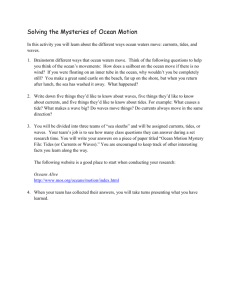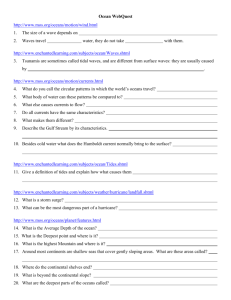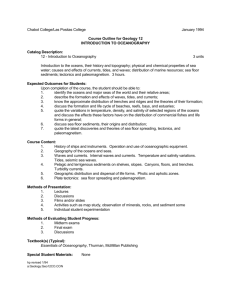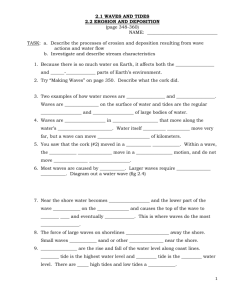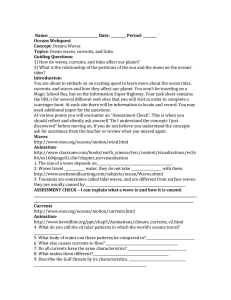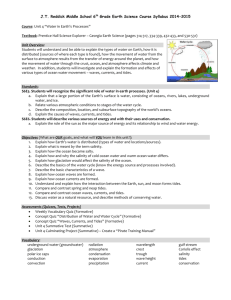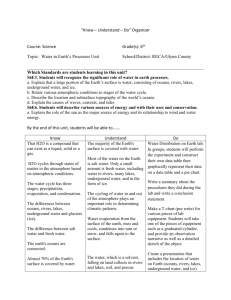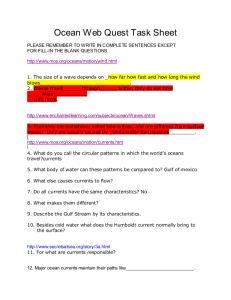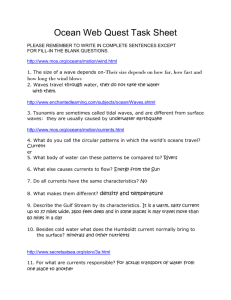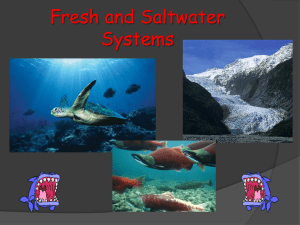Geography 1 Hydrosphere Questions: Global View of Earth`s Waters
advertisement
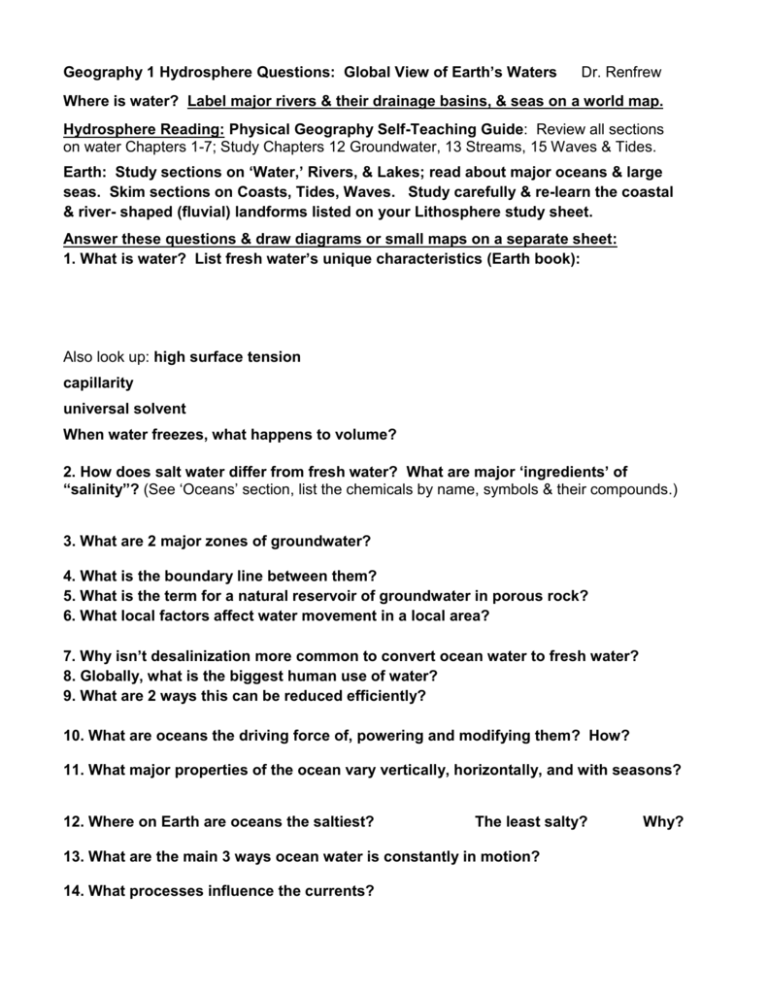
Geography 1 Hydrosphere Questions: Global View of Earth’s Waters Dr. Renfrew Where is water? Label major rivers & their drainage basins, & seas on a world map. Hydrosphere Reading: Physical Geography Self-Teaching Guide: Review all sections on water Chapters 1-7; Study Chapters 12 Groundwater, 13 Streams, 15 Waves & Tides. Earth: Study sections on ‘Water,’ Rivers, & Lakes; read about major oceans & large seas. Skim sections on Coasts, Tides, Waves. Study carefully & re-learn the coastal & river- shaped (fluvial) landforms listed on your Lithosphere study sheet. Answer these questions & draw diagrams or small maps on a separate sheet: 1. What is water? List fresh water’s unique characteristics (Earth book): Also look up: high surface tension capillarity universal solvent When water freezes, what happens to volume? 2. How does salt water differ from fresh water? What are major ‘ingredients’ of “salinity”? (See ‘Oceans’ section, list the chemicals by name, symbols & their compounds.) 3. What are 2 major zones of groundwater? 4. What is the boundary line between them? 5. What is the term for a natural reservoir of groundwater in porous rock? 6. What local factors affect water movement in a local area? 7. Why isn’t desalinization more common to convert ocean water to fresh water? 8. Globally, what is the biggest human use of water? 9. What are 2 ways this can be reduced efficiently? 10. What are oceans the driving force of, powering and modifying them? How? 11. What major properties of the ocean vary vertically, horizontally, and with seasons? 12. Where on Earth are oceans the saltiest? The least salty? 13. What are the main 3 ways ocean water is constantly in motion? 14. What processes influence the currents? Why? 15. Draw small diagrams of the North Pacific Gyre & North Atlantic currents; use red for major warm currents, blue for cold, & label their names. Label simple arrows (other colors) for major global wind belts: mid-latitude westerlies + easterly trade winds in tropics. 16. What is upwelling, and is it cold or warm? Why is it beneficial for organisms? 17. What is the thermohaline? Copy a little diagram of it. 18. How do tides work? Make small diagrams showing high & low tides, spring & neap tides. 19. Name another factor that affects how strong and high local tides are. 20. What causes ocean waves, & what factors determine their sizes? How are waves described? 21. What is a swell? 22. What are waves called when they hit a coastline? 23. Do waves transfer water across the sea? 24. What is the biggest determinant of changes in sea level? 25. What are 5-6 major ways coastlines are created or changed? RIVERS: 1. What factors determine the nature of stream tributaries, rivers, drainage basins, and deposition? 2. How do upper courses of rivers (stream tributaries joining in steep terrain) & lower courses of rivers (floodplains) differ? Copy Earth diagrams to show the patterns, and review lists of stream-related (fluvial) landforms from your Lithosphere study sheet. LAKES: 1. Describe several ways lakes are formed, and illustrate inflow & outflow with a simple diagram. 2. What are the major issues about freshwater quality?

